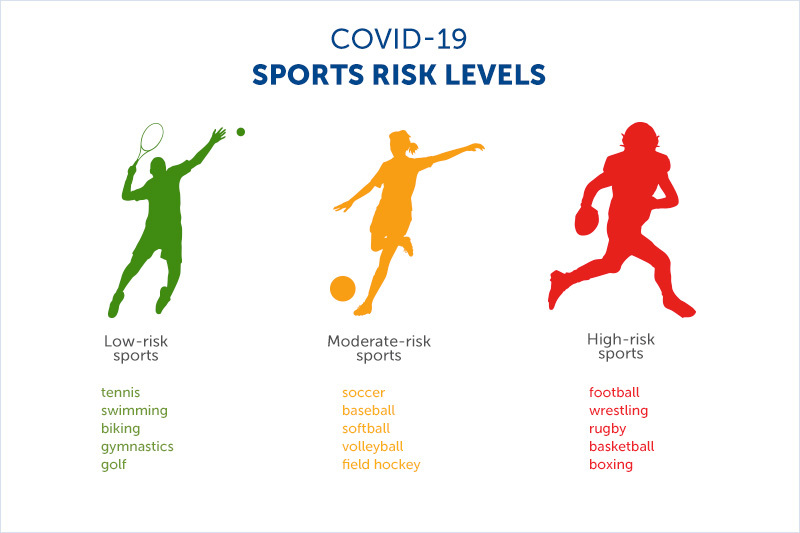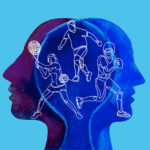COVID-19 and sports: Is it safe to play again?

It was hard on athletes when COVID-19 forced sports to shut down last spring, but at least everyone was in the same boat. Six months later, the picture is very different. Depending on where they live, what sport they play, and who they play with, some athletes are back in training. Others have to wait until spring, or longer, to play again. Some leagues have gone to great lengths to adopt safety measures, others have not.
All of this leaves parents in a bind. On one hand, COVID-19 infection remains a serious risk in many sports. On the other, athletes who can’t play miss out on the physical, emotional, and social benefits of sports. “The surest way to keep kids safe is to keep them in bubble,” says Dr. Andrea Stracciolini of the Sports Medicine Division. “But we can’t bubble our kids.”
Below, Dr. Stracciolini offers guidance for parents trying to decide if their kids can safely play sports this fall.
What makes a sport more or less safe during the COVID-19 pandemic?
Sports safety depends on a number of things, such as the amount of contact between players, the duration of the contact, and whether it’s possible to wear a mask during play. It helps to think of sports on a spectrum: from green (safest) to red (highest risk.) Individual sports that allow athletes to stay six to eight feet apart, like cross country running, tennis, and swimming are green. Team sports that require frequent close contact, like football and pair figure skating, have a much higher risk of COVID-19 transmission between athletes.

What COVID-19 precautions should parents look for on their child’s team?
Whether your child is playing on a school or club team, be sure the organization is taking basic precautions. Are players at least 6 feet apart, wearing face coverings, and washing their hands well before and after practice? Are athletes bringing their own equipment whenever possible and is shared equipment sanitized after each use? To protect athletes, these things should be mandatory and enforced consistently.
Can athletes compete safely during COVID-19?
I worry a lot about the risks of competition, quite frankly. But it’s hard to tell competitive athletes they can’t compete. I think it’s possible to reach a happy medium. Competing against a small number of local teams reduces athletes’ risk of exposure. Some teams are also gathering contact information from the teams they play against. If a player on either team tests positive, they can notify the other players and quickly contain a potential outbreak.
Some teams are traveling to other states to compete. Is this safe?
In this case, I advise parents to do some research beforehand. What are the other teams doing to limit the risk of infection? Are players required to wear masks? Are they limiting the number of spectators?
A parent whose child is playing hockey in New Hampshire told me the league is abiding by all of the basic rules. Only one parent per child is allowed in the rink, for instance, and all the players wear masks. Another parent described a basketball game where they didn’t see any precautions being taken. Parents really need to understand the basics of infection prevention, and make sure their child’s team follows them.
What are you telling competitive athletes who can’t play at all due to COVID-19?
Many of the competitive athletes I work with are worried about losing fitness during this extended downtime. No one would choose to be in this situation. But since we are, athletes can potentially enhance their performance and protect themselves from future injuries by focusing on strength and conditioning.
In the Sports Medicine Division, we are recommending that athletes take advantage of this time. A well-balanced fitness program can help them correct the strength and flexibility imbalances that often develop during periods of rapid growth. And of course, we remind them of the importance of adequate rest and recovery, proper sleep, and nutrition.
If you could change one thing about how parents and athletes are coping with COVID-19, what would it be?
There’s been a lot of focus on organized sports and safe return to sport, but there are many other ways kids can stay active.
Kids need daily exercise for their physical and mental health, especially now with full or partial remote learning. It doesn’t matter if it’s an organized sport or just getting outdoors for a game of catch, there are many safe and effective ways for kids to play and have fun while being physically active.
More information about sports safety: Youth and Adult Amateur Sports Guidance from the Massachusetts Executive Office of Energy and Environmental Affairs.
Get more answers about COVID-19 and learn about the Division of Sports Medicine.
Related Posts :
-

Helping athletes cope with the emotional rollercoaster of COVID-19
“The athletes I work with are over this,” says Kimberly O’Brien, a clinical social worker in the Sports Medicine ...
-

How athletes can stay healthy and injury-free during COVID-19
June is normally a time for student athletes to celebrate a long season of training and competition. But athletes are ...
-

Five running exercises you can do at home
Unlike a lot of athletes, runners haven't had to take time off during COVID-19. In fact, a lot of athletes ...
-

Sports injuries: Why ignoring pain is bad for athletes
“No guts, no glory.” “No pain, no gain.” “Rub some dirt in it.” Sports clichés like these encourage young ...





